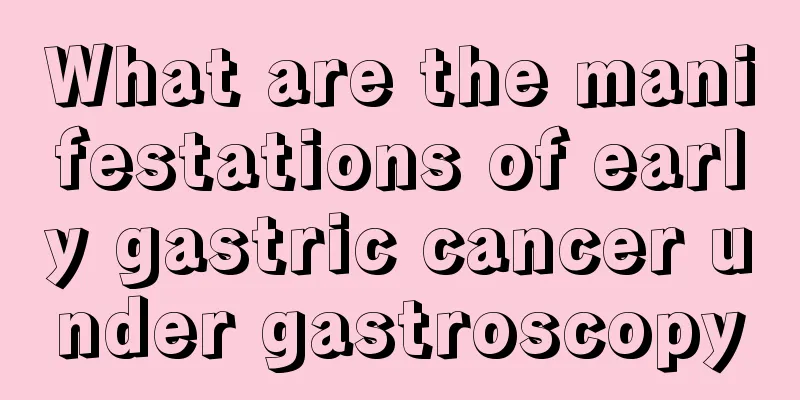What are the symptoms of gastric stump cancer pictures

|
Many people do not understand what are the symptoms of gastric remnant cancer, so let's take a look at this issue today. Before understanding this issue, I would like to take you to review what is gastric remnant cancer. Gastric remnant cancer is named because it occurs in the residual stomach after subtotal gastrectomy, or in the whole stomach after simple gastrointestinal anastomosis, simple perforation repair or vagus nerve transection. It should also be noted that gastric remnant cancer should generally be gastric cancer that occurs after surgery for non-cancerous gastric lesions. If the surgery is performed for malignant lesions, it should refer to gastric cancer that occurs more than 20 years after the surgery to be called gastric remnant cancer. The clinical manifestations of gastric stump cancer are similar to those of general gastric cancer. The main manifestations are dull pain in the upper abdomen, fullness in the upper abdomen after eating, loss of appetite, weight loss, anemia, fatigue, symptoms of cardia or anastomotic obstruction, and black stools or persistently positive fecal occult blood tests. Gastric stump cancer is easily misdiagnosed as anastomotic ulcers and delayed treatment. Most anastomotic ulcers occur within 3 years after surgery, while gastric stump cancer mostly occurs more than 10 years after surgery. Therefore, if a patient has been well for a long time after gastric surgery but has recently developed upper abdominal symptoms, gastric stump cancer should be suspected and gastrointestinal radiography and gastroscopy should be performed as soon as possible. The diagnosis rate of gastrointestinal angiography varies in the literature. In one group of cases, the diagnosis rate was only 11.8%, which shows that gastrointestinal angiography has its limitations. Therefore, gastroscopy and biopsy are the main means of early diagnosis of this disease, and the diagnosis rate can reach 90%. It is generally believed that patients over 50 years old after subtotal gastrectomy are classified as a high-risk group. Follow-up should be started 10 years after surgery, and at the latest 15 years. Even if there are no symptoms, regular gastroscopy should be performed every year. This can achieve early diagnosis and early treatment, and improve the prognosis of residual gastric cancer. |
<<: What is the cure rate for stomach cancer
>>: What should I do if my boyfriend has stomach cancer
Recommend
What to eat in the late stage of liver cancer? Five kinds of food are suitable for late stage of liver cancer
There are many treatments for liver cancer, but i...
What are the folk remedies for treating lung cancer in life? Try these 3 folk remedies for treating lung cancer
As long as we get sick, our body will be damaged....
What to do if the skin itches after a burn
After a skin burn, the skin will always feel itch...
Will honey crystallize in the summer?
The crystallization of honey causes a lot of trou...
What are some good ways to prevent liver cancer? Five ways to prevent liver cancer
Here are some ways to prevent liver cancer in dai...
Beware of three squatting habits that lead to knee pain
Squats are a common method of fitness and weight ...
How to care for liver cancer patients in hot summer? Liver cancer patients should know these 4 rehabilitation knowledge
Liver cancer has a high incidence and mortality r...
The treatment of cardia cancer will bring greater side effects to patients
For the treatment of early-stage cardiac cancer, ...
Is there any harm to pregnant women after rectal cancer radiation?
The embryo is most sensitive to radiation within ...
What are the hazards and complications of cervical spondylosis?
Cervical spondylosis is an extremely serious dise...
What are the symptoms of soft tissue infection and how to treat it
I believe that anyone who has seen soft tissue in...
Why does my ears hurt when I swallow saliva?
Sometimes when people are particularly tired in l...
How to heat breast milk without losing nutrients?
Breast milk generally refers to the mother's ...
What's wrong with the white spots on my arms
The appearance of white spots on the arms is very...
Is nasopharyngeal cancer saliva contagious?
Is nasopharyngeal cancer saliva contagious? The s...









